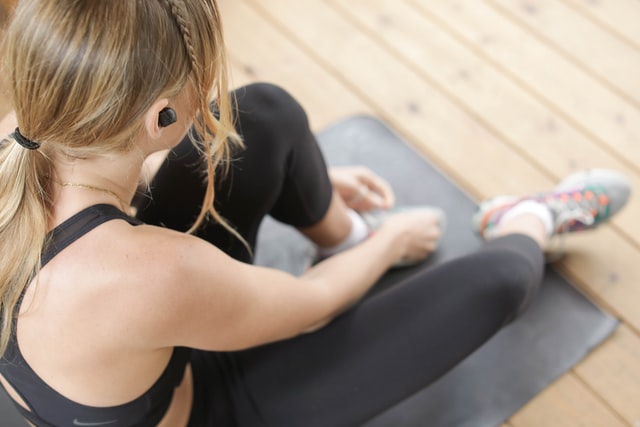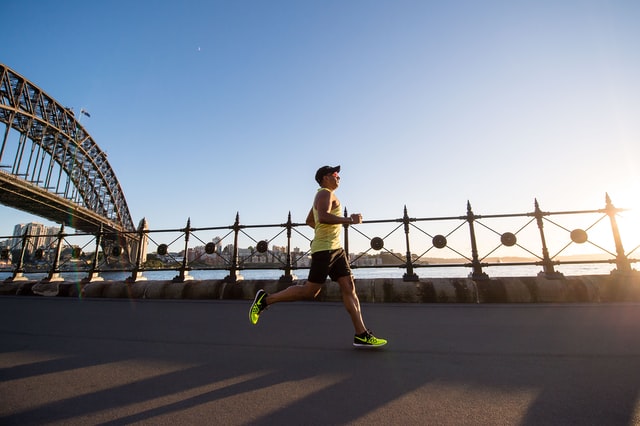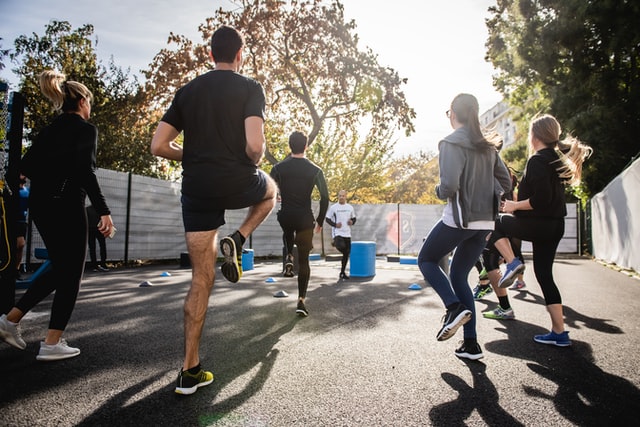
Movement is also significant for people with diabetes. Every more intense training of our body consumes the glucose present in the body and thus affects its fluctuation and concentration in the blood. Regular exercise has a positive effect on glucose metabolism in our bodies. No drug reduces insulin resistance as much as regular physical activity.
Contents
- Physical activity of a diabetic - how does exercise affect sugar levels?
- Exercise and blood sugar levels in a healthy person
- Physical activity in diabetes, or diabetes and exercise
- Diabetes and training
- Physical exercise in type 1 diabetes
- Physical exercise in type 2 diabetes
- Type 2 diabetes and the gym
- Diabetes and physical work
- Monitoring blood glucose levels
With regular exercise, our mood and, therefore, our quality of life improves. How we function at work, at home, how we sleep, and how we rest is a result of our health and the overall psychomotor condition of our body.
Physical activity of a diabetic - how does exercise affect sugar levels?

The mechanism of the effect of physical exercise on the body of a diabetic has not been fully recognized. However, it is known that regardless of weight loss, moderate, regular exercise improves glucose tolerance and has a beneficial effect on increasing tissue insulin sensitivity.
Exercise and blood sugar levels in a healthy person

Post-exercise blood sugar levels in a healthy person depend on the intensity and duration of exercise. During short-term physical activity, the increase in glycemia is directly proportional to the increase in load (although glucose consumption increases with exercise intensity).
During moderate but prolonged physical activity, blood glucose levels gradually decrease. This is also accompanied by a decrease in blood insulin concentrations. After several hours of work, clinical symptoms of hypoglycemia (a condition in which blood glucose levels fall below 70 mg/dL), may develop.
Physical activity in diabetes, or diabetes and exercise

Diabetics also experience changes in blood sugar levels depending on the intensity and duration of exercise. However, the body's responses are different in people treated and not treated with insulin. High blood sugar is observed in patients with severe insulin deficiency after exercise.
Diabetics treated with insulin experience a drop in sugar after exercise. This increases the risk of developing hyperglycemia, or overdiagnosis (a condition in which blood glucose levels rise above 140 mg/dL) caused by increased glucose production. Hypoglycemia may occur during prolonged exercise (especially if the patient exercises on an empty stomach).
The patient should then eat a portion of quickly absorbed carbohydrates as soon as possible to balance glycemia. In diabetics treated with insulin, the blood concentration of insulin does not decrease during exercise (it depends only on the absorption rate from the injection site).
Diabetes and training

Moderate exercise after some time lowers blood sugar levels and improves insulin action. This is what diabetes rehabilitation is all about. Research has shown that training has a beneficial effect on both the prevention and treatment of diabetes. Proper nutrition and adequate physical activity significantly improve the health of the diabetic.
For people with diabetes, doctors recommend various forms of movement - aerobic exercise, strength training, cycling, swimming, and stretching. Physical activity must be moderate and regular (from 5-10 minutes a day at first, up to a minimum of half an hour 3 times a week). It is advisable to monitor blood glucose levels and heart rate (it should not exceed 80% of the maximum heart rate).
Of course, the training pace should be adjusted to your current mood and physical condition. Water and carbohydrates should be replenished after exercise. High-energy drinks designed for people with impaired glucose metabolism are convenient. However, if high sugar is observed after training, it is necessary to take an appropriate insulin dose.
Doctors recommend keeping an extraordinary diary to record the foods eaten and the parameters associated with each session (heart rate, blood pressure, and sugar levels before, during, and after training, mood, time and pace of exercise, etc.). This allows you to see how these factors affect your blood glucose levels and makes it easier to modify your training.
Physical exercise in type 1 diabetes

Physical exercise in people with type 1 diabetes promotes weight reduction, which results in better glycemic control, benefits insulin sensitivity, and improves mood. It also reduces the risk of coronary heart disease and protects against other vascular complications. However, several essential rules should be followed to prevent exercise-related hypoglycemia.
First and foremost, it is advisable to avoid strenuous exercise during the peak period of insulin action and avoid injecting into the areas of the body most intensively involved in the training. Measure your blood glucose levels before, during, and a few hours after exercise to adjust your insulin and carbohydrate intake. Always carry a bottle of nutritional drink for people with diabetes when exercising.
Exercise for type 1 diabetics should be tailored to the patient's age and fitness level. The optimal form of exercise for the elderly and obese people is Nordic walking. Initially, a moderate but regular (every 2-3 days) walk outdoors is recommended.
Gradually, its intensity can be increased until breathlessness. The set of exercises for diabetics includes all kinds of stretching and aerobic exercises, cycling, and swimming. Each physical activity should be preceded by a short warm-up followed by relaxation and calming exercises.
Examples of exercises for type 1 diabetics:
- exercise in the gym or outdoors (bicycling, side bends, arm and leg extensions),
- swimming,
- cycling (also stationary),
- physical games (volleyball, basketball, badminton),
- Nordic walking,
- skating,
- for ladies, dancing in comfortable, soft shoes with flat heels.
Physical exercise in type 2 diabetes

Physical activity in type 2 diabetes is the cornerstone of treating the disease. The beneficial effect of exercise on diabetes control and reduction of medication doses has been scientifically proven.
Regular moderate exercise also helps burn excess body fat, maintain body weight, increase muscle strength, improve bone density, lower blood pressure, improve circulation, protect against cardiovascular disease, increase energy levels, reduce stress, and relax.
Patients are advised to do most exercise, even running and sports, as long as the disease is under control and there are no complications. However, the decision should be preceded by a consultation with a doctor.
Of course, the same rules apply for type 1 diabetes, namely: monitoring glucose levels before, during, and after exercise, avoiding injections into areas involved in exercise (e.g., when cycling, insulin is best injected into the abdominal layers), avoiding exercise at the peak of insulin action, properly fitted shoes, and watching the feet after exercise, etc.
The exercises for type 2 diabetics include gymnastics, walking, hiking, jogging, swimming, playing ball and badminton, cycling, rollerblading, and cross-country skiing.
The intensity of the exercises should be adjusted to the patient's condition and age. Heart rate, blood pressure, and glycemia should be monitored during exercise to help determine the appropriate exercise intensity. The optimal duration of exercise is 20 to 45 minutes. Sugar-lowering exercises should be performed every other day.
At the end of the exercise, the intensity should be gently decreased for 5-10 minutes (heart rate should return to resting level) to prevent post-exercise hypotension and muscle soreness.
Type 2 diabetes and the gym

"Anaerobic" exercises should be avoided. These include, in particular, exercise at the gym, sprinting, paragliding, gliding, motor racing, horse and car racing, diving, tennis, mountain climbing, and parachute jumping. If you want to participate in such sports despite your illness, you should control your blood glucose and adjust your meals to the increased energy requirements.
The insulin dose must be reduced to not suffer from hypoglycemia. If the training is very intensive, the insulin dose can be omitted (you can also eat before the workout and not give insulin at that time).
Diabetes and physical work

Diabetes is not a contraindication to physical work. An only excessive dosage of it is not advisable. However, doctors recommend that diabetics should instead undertake mental work. Work for a diabetic should allow him to monitor his blood glucose unhindered. If he finds elevated sugar levels after exercise, he must be able to inject insulin. On the other hand, when his post-exercise sugar levels drop significantly, he should be able to eat a sweet snack. Dizziness is common during exercise.
Diabetes creates many problems for the patient in the workplace. Often people with type 2 diabetes remain unaware of their disease for a long time. They ignore the symptoms of diabetes and attribute fatigue and weakness to another condition. There are jobs where hypoglycemia can put you or those around you in grave danger (because of the risk of losing consciousness). Be especially careful when working at height or on the water.
Restrictions may also result from later complications of diabetes, such as loss of vision. Jobs that a person with diabetes should not do include: driver, engine driver, pilot, stewardess, lifeguard, miner, traffic controller, fireman, security guard, smoker, cook, baker, etc.
Monitoring blood glucose levels

Exercise leads to high blood glucose levels (hyperglycemia) or low blood glucose levels (hypoglycemia). It is essential to know how different types of exercise affect your blood glucose levels.
To help with this, if you have type 1 diabetes, you should check your blood glucose levels:
- before you exercise
- During exercise (every 30 minutes)
- after you have finished exercising.
- Frequently testing your blood glucose levels allows you to understand when you need to change your insulin doses or the meals you eat. This means you can prevent your blood glucose levels from getting too high or too low. Do not change the diabetes medications you are taking before discussing this in detail with your diabetes care team. Any changes should be gradual and only be made after your blood glucose readings have been thoroughly evaluated.





